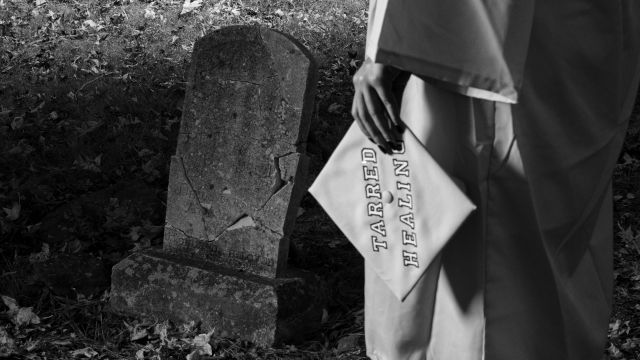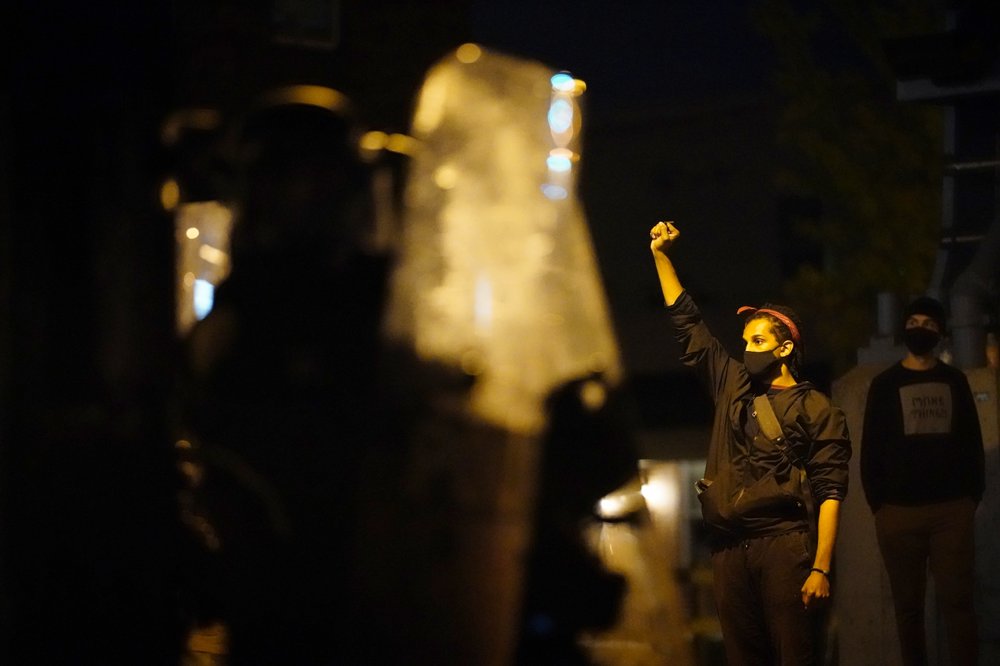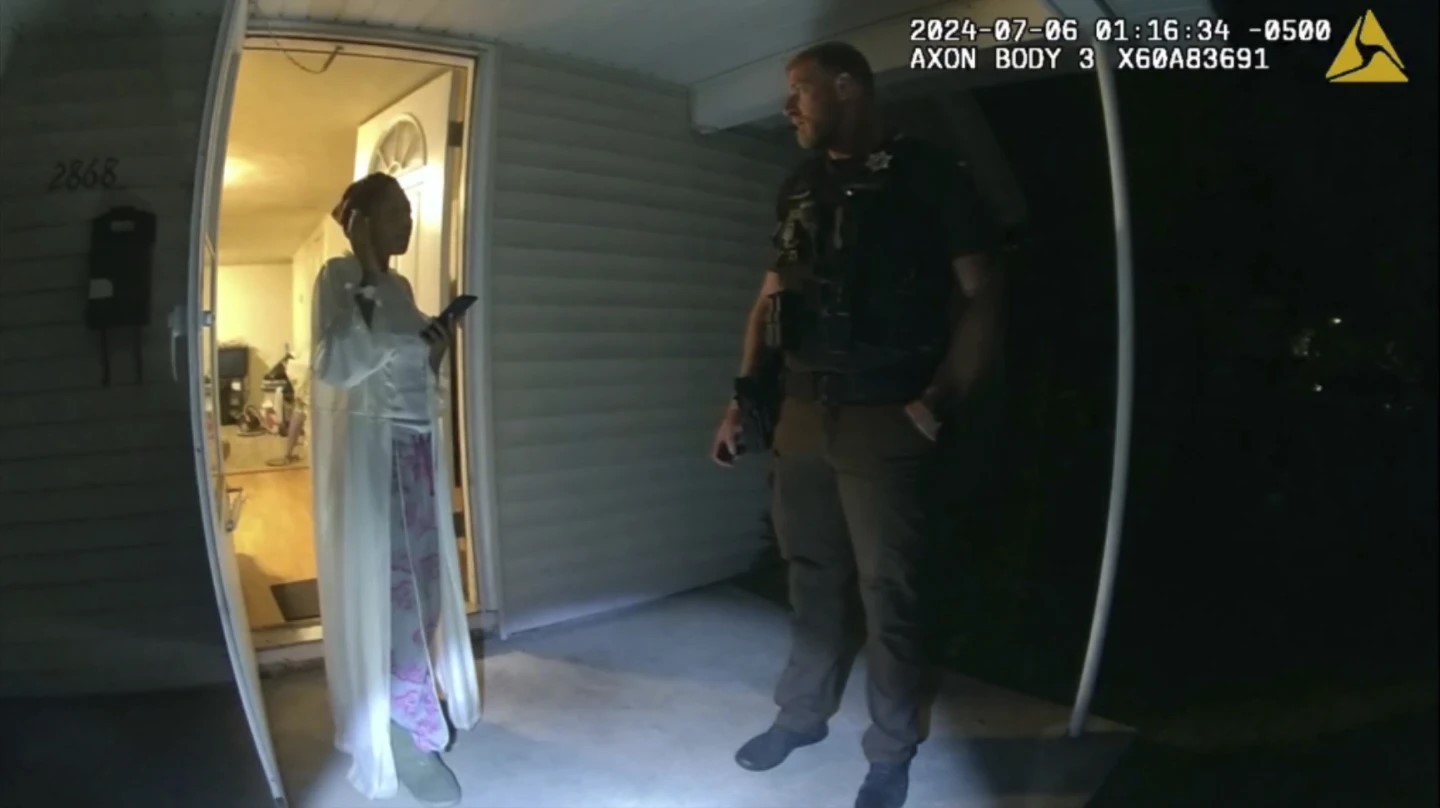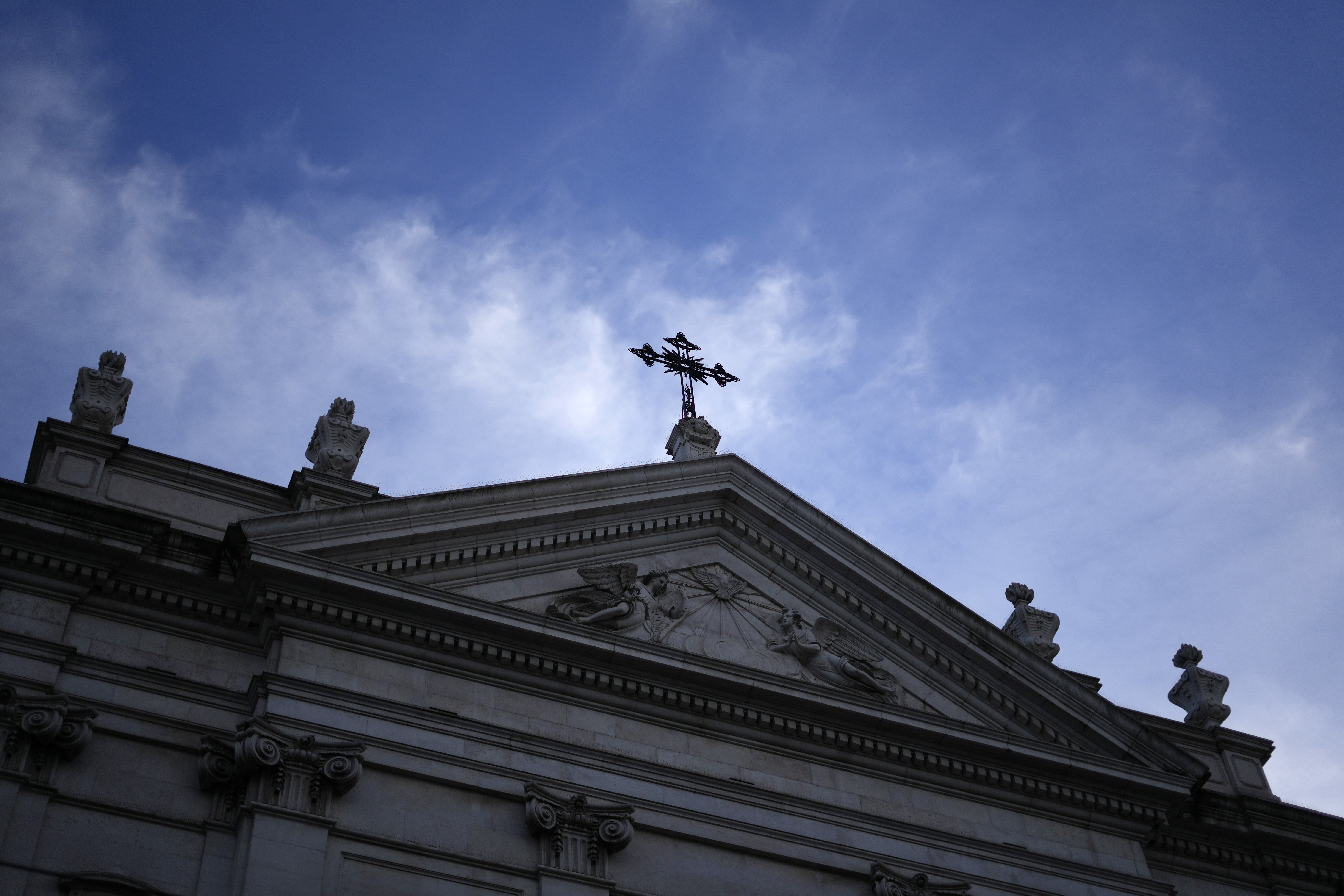One year ago, an exhibit by Durham photographer Cornell Watson was expected to be put on display in the Sonja Haynes Stone Center on UNC’s campus. But, over a dispute about the content and where the photos could be shared, the Stone Center cancelled the exhibit.
Since then, Tarred Healing has been displayed at the Chapel Hill Public Library and seen many places online. Now, you can experience the exhibit in person in Memphis, as the National Civil Rights Museum opened its display of “Tarred Healing” on Monday.
The photography series aims to tell the story of Black Chapel Hill residents and reflect their checkered emotions and relationships with the university. The 13 photos include a mix of artistic renderings of campus features, candid photos of campus protests and portraits of community members.
After being commissioned by the Stone Center to create the photo gallery, Watson said the partnership suffered after the center leadership asked for some of the photos to be excluded. The dispute caused the exhibit to be delayed – and even more disagreement arose after Watson submitted the photos to the Washington Post. The newspaper published the project in full before it opened at the Stone Center in February 2022 — and once UNC faculty found out, they chose to cancel their in-person display entirely.

The Unsung Founders Memorial, an installation to commemorate and honor the free and enslaved Black people who built UNC’s campus, stands under the silhouette of an artist reimagining the Confederate monument ‘Silent Sam’ that stood near the memorial until 2018. This photo was one of three the Sonja Haynes Stone Center asked Cornell Watson to leave out of “Tarred Healing.” (Photo via Cornell Watson.)

Clayton Sommers, Vice Chancellor for Public Affairs and Secretary of The University for the University of North Carolina at Chapel Hill, stares as Black students lead a demonstration during a UNC Board of Trustees meeting to make a tenure decision for Nikole Hannah-Jones in 2021. (Photo via Cornell Watson.)
Watson told 97.9 The Hill that he reflects on that series of events often, wondering if he should have acted differently. In the end, however, he says he still believes publishing just part of the exhibit would’ve been giving into a level of “censorship” and he’s grateful people have been able to see the full project.
“This series is art, right,” Watson asked. “It’s no different than if a writer puts a book together with ten chapters and you take away three chapters – it’s not the same book that the person wrote. That was the same thing with this story: I was trying to tell a full, complete story about Black Chapel Hill, about the Black experience on campus, and taking away certain aspects – student demonstration, fight, resiliency, systems of oppression that Black people face – takes away from that full [scope] of the story.”
Watson said shortly after the story of UNC’s cancellation was shared, the National Civil Rights Museum reached out to him about “Tarred Healing.” The group expressed interest in having it on display at its home in Memphis, TN, where the hotel Martin Luther King Jr. was murdered has since been turned into several exhibits.
Watson agreed, but on one condition: that the photo series first was displayed at the Chapel Hill Public Library, which had also offered hosting an exhibition. The photography artist said he wanted to ensure “Tarred Healing” was shown in town because he wanted to spark community discussion in the places the project depicts.
And the response was impressive.
“There ended up being 200+ comment cards that were left at the Chapel Hill Public Library about the exhibition,” Watson said, “which is just powerful in and of itself. So many people felt informed – a lot of people had no idea about some of the stories. Black people felt seen and heard…just a wide range of different comments that got left.”
Watson said he remembers some Stone Center concern about the full display was whether the Chapel Hill community members depicted in the photos would appreciate the reflections on oppression. But he said through the project’s journey from cancellation to unveiling last April, he feels even closer to the group of subjects and collaborators of “Tarred Healing.”
“It’s been great that there’s been more attention on their stories, on the work that’s been done, on the work that still needs to be done,” said Watson. “And now that it’s on a bigger stage, I think that now more people know about their story.”
The new display of “Tarred Healing” at the National Civil Rights Museum builds on the project’s initial vision. Watson described the creative process of building the atmosphere for the photos. There’s a description of the project’s history and initial cancellation, with Carolina blue lighting and even a detailed history of the Tar Heel name itself to help provide visitors context.
“At the museum, it feels very immersive,” said the photographer. “Instead of the photos being on the walls, they sit on top of barricades – which is a play on the barricades surrounding the Unsung Founders Memorial when I took the photo, the day after white supremacists went there and sat on it, desecrating it. They also [constructed] a replica of the base of silent Sam, which sits inside of the barricade area.
“All of the photos are 46 by 60 [inches],” added Watson, “so when you enter into the space, everything is in your face.”
After private screenings on January 14 and 15, the exhibition opened to the public on one of the museum’s busiest days: Martin Luther King Jr. Day.
Watson said seeing approximately 4,000 people pass through his exhibit – with some standing in the room long enough to be shoo-ed away to make room for incoming visitors – was a surreal experience.
"Tarred Healing" officially opened at the @NCRMuseum today and I'm having all the feels standing on this scared ground on this special day. #MLKDay pic.twitter.com/CFUdqAkqzM
— Cornell Watson (He/Him) (@cornwhizzle) January 17, 2023
“I think I’m still processing just the impact of the story in general and how many people it’s touched, informed and celebrated,” he said.
Despite its local ties and distinct story, Watson said he believes people see themselves in the photos no matter their background.
“These Black stories and the things they have to persevere through, they’re not unique,” said Watson. “There’s a story of environmental racism in almost every Black community’s backyard. There’s a story of Confederate monuments in almost every Black community’s backyard. There are stories of young Black people that are leading movements in every single Black community. People get to see themselves in this story and at the same time, get to know more specifically about the Chapel Hill Black community.”
“Tarred Healing” will be on display at the National Civil Rights Museum through March 20. You can also find the full photo gallery online here.
Featured photo via Cornell Watson.
Chapelboro.com does not charge subscription fees, and you can directly support our efforts in local journalism here. Want more of what you see on Chapelboro? Let us bring free local news and community information to you by signing up for our biweekly newsletter.











